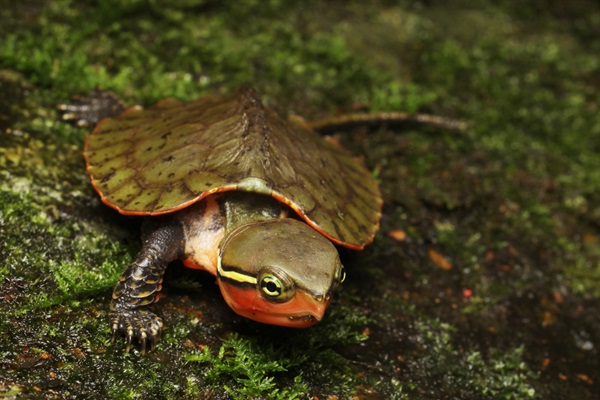There are five species of native freshwater turtles in Hong Kong, including the Big-headed Turtle. The name comes from its extraordinarily large head, which distinguishes it from other turtles. You might wonder how the head of this size can retract into the shell. As it turns out not all turtles can retract their heads into the shells. However, Big-headed Turtle is able to use its strong beak for protection. Having an eagle-like hooked upper jaw, the species is also called 'Eagle-beaked Turtle' in Chinese.

Living in high-altitude streams, Big-headed Turtle has well-developed claws for efficiently climbing in fast-flowing water. It is nocturnal and its brown flat body closely resembles the boulders and rocks in hillstreams, making it practically invisible to predators. The camouflage, however, is not something the turtle possesses since its young age. The sternums of the juveniles are bright orange-red, with obvious black markings in the middle, and prominent yellow and black eyeliners behind their eyes. As they grow, these markings and colours gradually fade away.
Scientists once thought that Big-headed Turtle was a carnivore. Later, it was discovered that the species also feeds on other than insects, fish, molluscs, and crustaceans, as well as the fruits of Machilus spp., suggesting that it is an omnivore. Turtles normally take a long time to grow, and Big-headed Turtle is no exception; it takes about 8 to 13 years for it to grow to full size and reach sexual maturity.
| Family | Platysternidae |
|---|---|
| Scientific Name | Platysternon megacephalum |
| Adult Size | About 20 cm in carapace length |
| Habitat | High-altitude streams |
| IUCN Red List Status | Critically Endangered |
